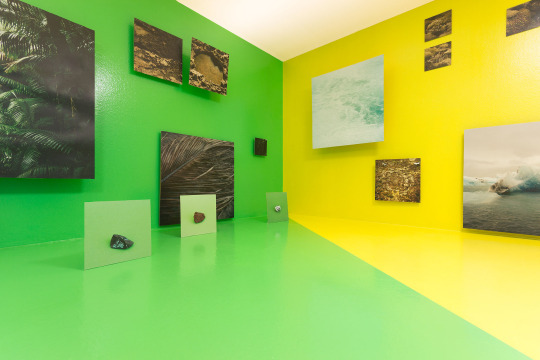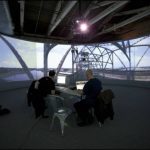Interview | The Story of “A Place to Disappear,” a Conversation with Pablo Lerma
“For me, the most powerful connection between painting and photography is the sense of time; how with only a gesture you can use time as a tool to change the reality you’re trying to capture/interpret.”
Pablo Lerma is a visual artist and researcher based in New York. His artistic practice involves researching and collecting photographs, maps, drawings, illustrations, and geological material addressing concepts such as time, change, erosion, and extinction. He is a faculty member at the International Center of Photography and Kean University. Currently, he is pre-selling his first photobook A Place to Disappear, which will be published by Kris Graves Projects. Pablo is an alumnus of the IAP Mentoring Program and of the Artist as Entrepreneur Boot Camp.
NYFA: What made you mainly focus on photography, instead of painting and how do you see the connections between these two disciplines? How do they influence your practice?
Pablo Lerma: I started painting when I was 13 years old. At that moment, I was very interested in the idea of mimesis. I remember painting almost every organic object in my surroundings; fruits, vegetables, trees, etc. For a few years, I spent my weekends and summertime drawing and painting. When I went to college and started my major in painting, I realized that I was missing something. My desire for reproducing reality was gone, so I felt trapped in endless processes while I was painting with oil. More and more I was using photographs to paint, instead of painting from natural objects. That was the moment that I knew photography would be the next step. Why would I want to continue painting photographs if I can take those images myself? Before I finished my bachelor in painting, I was enrolled in a photography school to start my training as a photographer.
For me, the most powerful connection between painting and photography is the sense of time; how with only a gesture you can use time as a tool to change the reality you’re trying to capture/interpret. A painting is made by layers and layers of pigments, each layer being a new stratum of time. Meanwhile, a photograph is made using a shutter that modifies the amount of time of the reality in the moment that image is captured. In my understanding, time is the bond between painting and photography.
The artistic references that influence my practice can go from cinema to architecture or gardening. I do visit several shows of painting and photography, but more and more I am leaning towards a type of work that reinterprets instead of representing things.
NYFA: What’s your most recent project? What’s the idea/concept behind it?
PL: I’ve been working for the last four years on a project called A Place to Disappear. It is a visual project that explores man’s absence from the primitive landscape on Earth. It depicts a near future where the humans will disappear from this planet but come back to Earth centuries later.
The work focuses on the traces of utopian landscapes in transformation and extinction, and combines them with vernacular photographs from expeditions in the 19th century that documented the same locations. Consequently, the sequence collapses space and time in a way that reflects the relationship between the archive and human memory. The visual narrative also reveals the impossibility of a fixed landscape and taps into the viewers’ imaginations.
I am in the last stage of the project, working on a photobook that it will be published in the second half of 2017. The dummy of the book was nominated to the “First Book Award” by MACK Editions this year.

NYFA: Your practice includes lots of intense research on the Nation and this Earth we are living on. What stories would you like to tell the audience through your lens and creation?
PL: I would like to tell stories of unreachable places, utopian landscapes, undiscovered locations, lost archives, and future memories. My work always evolves into a revisitation of the past to understand the future; what we’ve done that changes our perception of the future in the natural world.
I am concerned about our own existence in terms of memory and subjectivity, and the way institutions dominate our understanding of history, knowledge, and the natural world.
NYFA: Are your publications an extension of your artworks? Many photographers are exploring cross-discipline creation; like photography and installation, or photography and publication, etc. How do you see the future development of the photography field?
PL: Yes, publications and photobooks are an extension of my work and sometimes the only vehicle to show it. I remember being in college and feeling prouder of my final zine than of the artwork itself. Through the years, I continued working on small zines and publications, but always feeling a bit ashamed of undervaluing my own artwork, until I discovered the photobook clubs and its big community worldwide that works to show and promote books made with photographs. After I moved to New York, I started joining meetings and salons where publishers and photobook makers present their books. At some point, I started shooting images with my instant cameras thinking about books as a final container for that artwork. That’s how I started self-publishing my photobooks. The first one was Stumps, followed by Arga, and now I am working on a third publication related to the Sandwich Islands.
The development of photography is moving forward very fast. The concept of camera and the role of the photographer is changing constantly. Do we need a film camera? Or maybe a full-frame DSLR camera? Why don’t we shoot with our cell-phones? Internet and social media add a new dimension to the photography world that makes this field more popular than ever. I am someone who grew up between film cameras and digital cameras. I had my first computer and cell-phone at a very young age, and that probably changed my perception on photography. However, I still do believe that film cameras have a different sense of time and capture that moves away from any other digital camera. Without any doubt, the future of photography will be reshaped by the digital world.
NYFA: What’s your relationship with the International Center of Photography (ICP)? How do you see this institution’s role in New York and in the current photography field in general?
PL: I am currently a faculty member at ICP. I became involved with the school as a Teaching Assistant (T.A.) in the very first weeks I moved to New York. My experience with ICP has been rewarding from day one. The fact that I started as a T.A. working in the darkrooms gave me a lot of experience and time to familiarize with procedures in the school. For two years, I was assisting different instructors and learning their multiple approaches to teaching. Eventually, I was offered a faculty position to teach at the school. Recently, I started collaborating with a community program of ICP in the Bronx, where I teach darkroom courses to pre-teens.
ICP develops a magnificent role in the photography community in New York. It’s a school founded by Cornell Capa with a profound heritage in photo-documentary. ICP is in tune with contemporary ways of reaching out to new audiences through new programs, like the new media program, or the MFA program at Bard College, or the new location of the Museum at Bowery.
Learn more about Pablo Lerma.
Sign up here for the free Con Edison Immigrant Artist Program Newsletter. Find out more about NYFA’s Immigrant Artist Program (IAP).
Artist as Entrepreneur Boot Camps are part of NYFA Learning, which includes professional development for artists and arts administrators. Sign up for NYFA’s free bi-weekly newsletter to receive updates on future programs.
– Interview conducted by Judy Cai, Program Officer
Images: Installation views from A Place to Disappear, Konstanet (Tallin), 2016





